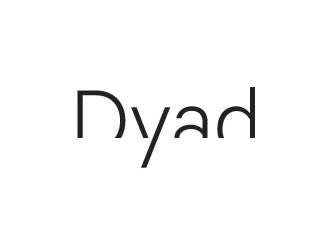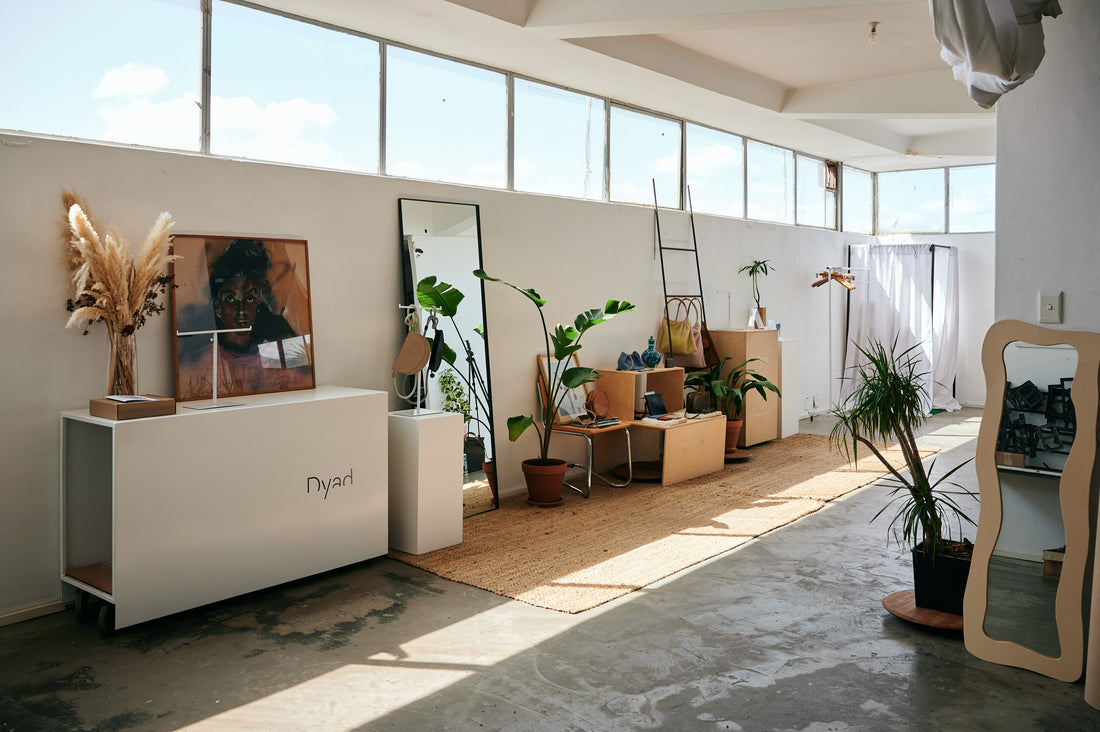A space to play, to create, connect and make something beautiful. When you come to the Dyad workshop and Studio in Woodstock, Cape Town, it's more than a place that manufactures bags by hand, it's the space where Jess and her team can create their sense of calm and purpose. A workspace can truly define the outcome of your product and your level of creativity. Jess, the owner of Dyad, gives us some insight into her beautiful space and what a day in her workshop looks like


What inspired you to establish the Dyad design studio space and workshop?
The space was established out of the need of having to grow my team and with that I needed more space. The previous studio was quite compact and didn’t allow for much expansion.
Also after becoming the sole owner of the business I was craving a physical change too, so it only made sense to look for a bigger space that would leave enough room for Dyad to expand and flourish.



Do you have a daily ritual when you arrive in your workspace?
My day can be quite busy and I’m never quite sure what it is going to look like, so having routines helps me deal better with the unexpected during the work day. I usually come to the studio and the first thing I do is open my laptop and turn on music, which plays in the studio throughout the day. After that I usually check in with my team. I want to know how they’re doing and we have a quick catch-up on what needs to be done that day. Then I start looking at emails, orders etc. and start structuring my day and updating my to-do list.
What is your favourite area of your workshop and why?
I love all parts of my studio. Each section has its purpose but my favourite is probably my showroom section of the studio. I can play around with merchandising pieces and when I work on new designs, it is a nice space where they can be displayed away from the busy workshop area. It gives me room to re-think the design work on it and look at it in a visually calm space. My second favourite is the view of Table Mountain. Being able to see the mountain every day is very special and connects me to nature. I love how the view changes daily depending on the weather, it never gets boring.




Are there or what are the challenges in running your workshop/studio?
Being the boss can be challenging and probably the hardest part of being an entrepreneur for me. I had to learn a lot about myself and what kind of leader I wanted to be. Being honest with myself about my strengths and weaknesses was key in figuring out how to keep my team motivated and creating a space where we can all flourish and work together in a harmonious environment.
Can you walk us through the design process at the Dyad studio?
It usually starts with an idea of a shape or a size of, for example, a bag. From then on it’s probably mostly problem solving for me. How can I achieve a size or a shape like this? What’s its purpose? What are the details? How does it open and close? Is there a strap? If so, how is it attached?
In the beginning, it’s just a lot of thinking about it. If the idea sticks around for a while, like a couple of days or weeks, then I know it’s worth exploring. I start sketching to get a clearer idea of the design and then very quickly I will start with either cardboard or canvas to create the first mock-up. That phase of sampling in cardboard and canvas can take quite a while. All of the questions above will have to be answered during that process and it’s mainly problem solving which is the most frustrating but also most satisfying part. Once I feel fairly confident I will make a sample out of leather. The first one usually doesn’t come out great but it’s a starting point. Then I will involve my team. Their feedback is crucial, as they will be making the piece in the future so often they have great ideas on putting something together or making small changes to streamline the production process. A fresh pair of eyes is always a good idea.
How many samples have to be made to get to the final design is different, sometimes it’s only two, and sometimes it’s a few more than that. Once happy with a design I’ll test it out and wear it/use it for a couple of days to see how it holds up. Often I discover weak points or impractical details that have to be changed or something that is missing and needs to be added. After all of this has been done and the design has been signed off I will make the final pattern and with that pattern, I will go to the small business that makes the cutting knives that we are using to cut the leather pieces. Their craftsmanship is an important part of the process and when the knives are done we will make one piece first to see if the knives are correct. If that piece comes out great, we know we can make it in different colours and combinations.






